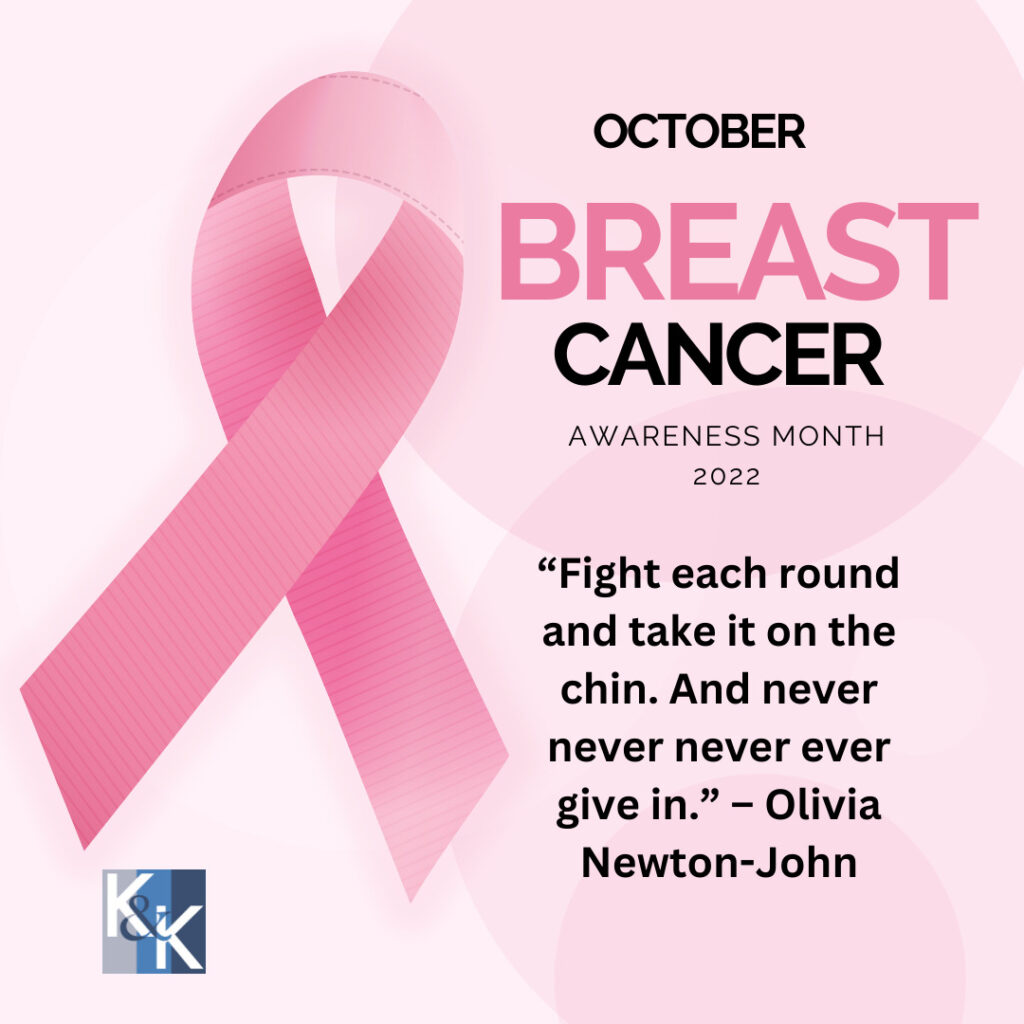
October is Breast Cancer Awareness Month, an annual worldwide campaign to increase awareness of the disease and highlight the importance of breast awareness, education, and research. No matter who you are, or where you live, breast cancer may touch your life.
In 2022, it is estimated that nearly 44,000 people in the United States will die from breast cancer. On average, every 2 minutes a woman is diagnosed with breast cancer in the United States. Other than skin cancer, breast cancer is the most common cancer among American women. Mammograms are the best way to find breast cancer early when it is easier to treat and before it is big enough to feel or cause symptoms.
What Are the Symptoms?
There are different symptoms of breast cancer, and some people have no symptoms at all. Symptoms can include:
- Any change in the size or the shape of the breast
- Pain in any area of the breast
- Nipple discharge other than breast milk (including blood)
- A new lump in the breast or underarm
What Are the Risk Factors?
Some factors that increase your risk of getting breast cancer include:
- Being a woman
- Being older – most breast cancers are found in women over age 50
- Having changes in your BRCA1 or BRCA2 genes
What are the Most Common Ways to Detect Breast Cancer?
The most common tests to detect breast cancer are screening mammograms and clinical breast exams. Screening tests are used to find breast cancer in a person without warning signs or symptoms.
A screening mammogram is a test that uses X-rays to create images of the breast. It’s the most effective screening test used today to find breast cancer in most women. Screening mammograms can find breast cancer early, sometimes up to 10 years before it could be detected by you or your doctor. Getting regular screening tests is the most reliable way to find breast cancer early. The American Cancer Society has screening guidelines for women at average risk of breast cancer, and for those at high risk for breast cancer.
Are there Follow Up Tests After a Mammogram?
For most women, the results of a mammogram will be good news. The mammogram will show no sign of breast cancer. If a mammogram shows something abnormal, follow-up tests will check whether the finding is breast cancer. Sometimes, breast cancer can be ruled out with a follow-up diagnostic mammogram, breast ultrasound or breast MRI.
Diagnostic mammogram
A diagnostic mammogram is like a screening mammogram, but more images of the breast are taken to examine the abnormal findings more closely.
Breast ultrasound
A breast ultrasound uses sound waves to make images of the breast. It’s often used as a follow-up test after an abnormal finding on a mammogram or clinical breast exam. It can show the difference between a liquid-filled cyst and a solid mass.
Breast MRI
A breast MRI uses magnetic fields to create an image of the breast.
Biopsy
If follow-up tests cannot rule out breast cancer, a biopsy is done. A biopsy removes cells or tissue to check for cancer. A biopsy is the only test that can diagnose and confirm breast cancer.
Early Detection Saves Lives
Now for some good news. If breast cancer is found early, there are more treatment options and a better chance of survival. Women whose breast cancer is detected at an early stage have a 93 percent or higher survival rate in the first five years.
If you or someone you know is suffering from breast cancer or any other illness, and you are being denied benefits by your insurer, please call Kantor & Kantor for a free consultation with one of our Insurance Lawyers or use our online contact form.
We understand, and we can help.

